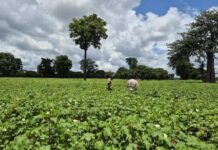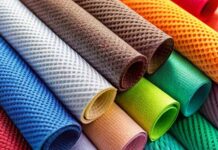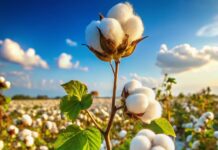The European textile industry is undergoing a remarkable transformation, driven by the need to align with stricter sustainability regulations. These regulations are crafted to foster a more eco-friendly textile production process. As consumers become increasingly aware of their environmental footprint, there’s a growing demand for sustainable fashion. The industry is responding with a wave of innovation, turning towards greener practices and technologies that ensure their products meet these heightened ecological standards.
Overview of Current Sustainability Regulations
The European textile industry is living in a time of transformation, largely shaped by the growing emphasis on sustainability. With environmental concerns at the forefront, several regulatory frameworks have emerged to guide industries towards greener practices.
Key Regulatory Bodies and Their Roles
Several key players are shaping the landscape of sustainability in textiles. At the top, the European Union (EU) sets the tone with wide-ranging policies like the European Green Deal, which aims for carbon neutrality by 2050. National governments also play crucial roles, tailoring EU directives to local needs. Furthermore, organizations such as the European Chemicals Agency (ECHA) oversee regulations related to chemical use in textiles, ensuring safety for both humans and the environment.
Recent Changes in Sustainability Guidelines
In recent years, new guidelines have become more stringent. The EU’s Strategy for Sustainable and Circular Textiles, for instance, pushes for more durable and recyclable textile products. Restrictions on hazardous substances have tightened, demanding greater transparency from manufacturers about the chemicals involved in production processes. These changes necessitate a new level of accountability and innovation within the industry.
Impact of Regulations on the Textile Industry
These regulations have prompted a cultural shift within the textile industry. Although meeting new standards requires investment, it also opens doors to sustainable growth. Brands are now more attentive to sourcing, production processes, and the lifecycle of their products. Compliance has become not just a legal issue but also a moral and competitive edge.
Adaptation Strategies in the Textile Industry
Faced with such regulations, the European textile industry is crafting new strategies to align with sustainability goals.
Adoption of Eco-friendly Materials
One of the most noticeable shifts is the increased use of eco-friendly materials. Textile companies are investing in organic cotton, recycled polyester, and other sustainable fibers. This not only meets regulatory demands but also appeals to consumers increasingly drawn to sustainable fashion choices.
Innovations in Energy-efficient Production
Innovation is the name of the game when it comes to energy efficiency. Textile manufacturers are exploring renewable energy sources like solar and wind to power their facilities. Additionally, advancements in machinery technology have led to more energy-efficient production lines, significantly reducing the industry’s carbon footprint.
Waste Reduction and Recycling Initiatives
Waste not—want not! The industry is getting creative with waste reduction. Many companies are implementing circular production models, where textile waste is recycled into new products. This not only conserves resources but transforms waste into valuable raw materials, closing the loop on production and fostering a more circular economy. Through these changes, the textile industry is weaving its way toward a more sustainable future, thread by thread.
Challenges Faced by the Industry
With the European textile industry working hard to meet stricter sustainability regulations, several challenges have emerged as hurdles for businesses and manufacturers. Let’s unpack these complications one by one to understand their implications and how the industry is addressing them.
Economic Implications for Businesses
For many companies, going green isn’t just about altering production lines—it’s a financial hurdle. The shift towards sustainable practices often requires significant investment. Businesses might face:
– Increased costs for sourcing eco-friendly materials.
– Expenses related to upgrading infrastructure to align with sustainable practices.
– Potential short-term losses while transitioning from conventional methods to greener alternatives.
These economic implications can be especially daunting for small and medium-sized enterprises that don’t have the same financial cushion as larger corporations.
Supply Chain Adjustments
Revamping the supply chain is another sticking point as companies strive to adhere to new regulations. This involves:
– Identifying and partnering with suppliers who prioritize sustainability.
– Implementing tracking systems to ensure transparency and eco-friendliness in the entire supply chain.
– Managing potential delays as suppliers adapt to new standards.
These adjustments aren’t just changes on paper; they represent a foundational shift in how the textile industry operates.
Meeting Consumer Demand for Fast Fashion
Nowadays, consumers are more eco-conscious yet still want their quick fixes of the latest trends. The challenge lies in balancing sustainability with the fast fashion model. Companies need to:
– Innovate production processes to reduce lead times without compromising on sustainability.
– Find a sweet spot between quality, sustainability, and price that satisfies eco-conscious consumers.
Opportunities for Growth and Innovation
While the journey is riddled with challenges, there’s no shortage of opportunities that await the industrious and innovative players in the European textile scene.
Development of New Sustainable Technologies
Embracing sustainability has sparked a wave of technological advancement. Companies are investing in:
– Biotechnology for creating biodegradable fabrics.
– Waterless dyeing techniques to conserve resources.
– Recycling technologies to make use of textile waste.
These innovations not only reduce the environmental footprint but also present new business avenues.
Collaboration with Environmental Organizations
Organizations are increasingly forming alliances with environmental bodies to bolster their sustainability efforts. Benefits include:
– Access to expert knowledge on sustainability practices.
– Strengthened brand image through credible certification and endorsements.
– Opportunities for joint projects and larger-scale initiatives with a positive environmental impact.
Potential for Market Expansion in Sustainable Fashion
As eco-awareness grows, so does the market for sustainable fashion. Companies have the chance to:
– Reach a broader customer base that values and actively seeks sustainable options.
– Tap into new markets and demographics that prioritize environmental responsibility.
– Differentiate themselves from competitors by becoming front-runners in the eco-fashion domain.
Ultimately, while stricter regulations present challenges, they also open doors for the European textile industry to lead a sustainable revolution that combines style with stewardship.
Conclusion
The European textile industry is proving it can adapt and thrive amidst stricter sustainability regulations. By stepping up its game in eco-friendly textiles and sustainable fashion, the industry is setting an example for others to follow. Through innovative solutions and embracing a greener approach, textile companies are not just complying with new laws, but flourishing because of them. As consumers become more eco-conscious, the industry continues to shift towards a more sustainable and responsible future. Together, we’re weaving a brighter, more sustainable tomorrow.






























